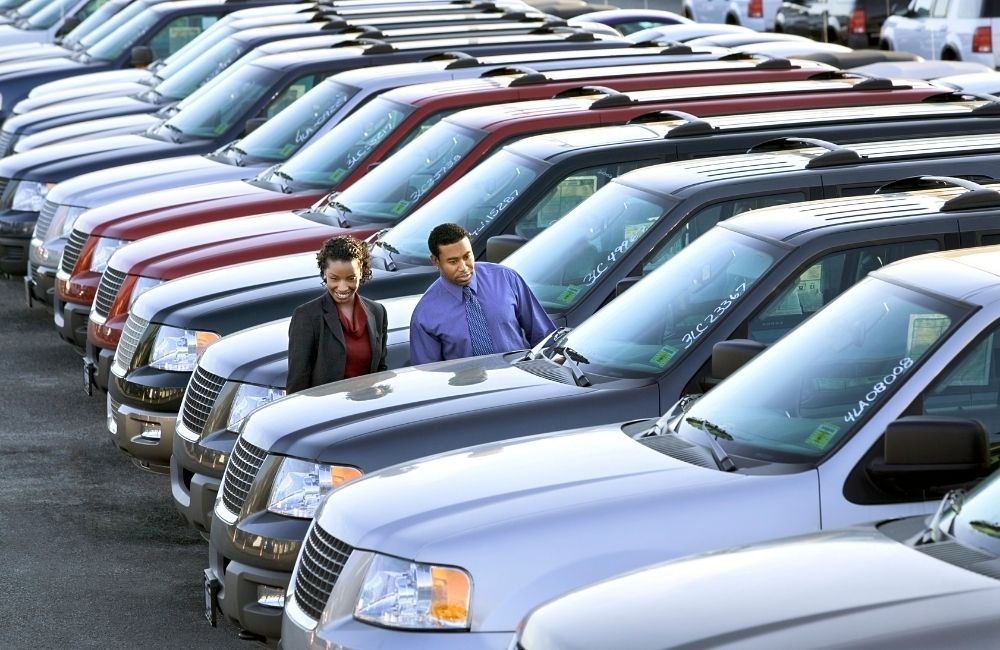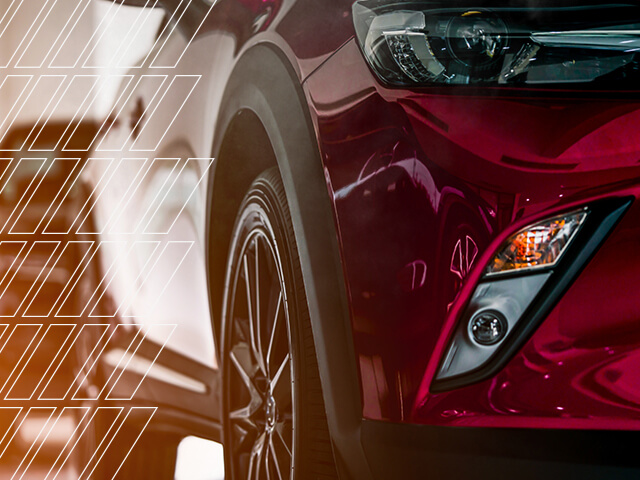How Much Do Dealers Make on Used Cars
Dealers typically make between $500 and $3000 on used cars. Profit margins depend on factors like vehicle condition, market demand, and negotiations.
Shopping for a used car can often lead to substantial savings compared to buying new. Car dealerships capitalize on this market by purchasing vehicles at lower prices, usually through trade-ins or auctions, and then selling them at a profit. The used car market is appealing because dealers can achieve higher profit margins compared with new car sales, where manufacturer pricing and competition keep prices relatively fixed.
Profit from used cars also helps dealers balance their overall revenue, as they offer a range of automotive services beyond just sales. Understanding dealer margins can empower customers in their purchasing decisions and negotiations, ensuring they receive fair value while allowing the dealer a reasonable profit.

Credit: www.jimmygrangerfordofstonewall.com
The Lucrative Business Of Used Cars
Used cars present a significant opportunity for dealerships to earn profits. As new car prices soar, more consumers turn to the pre-owned market, making it a thriving sector within the automotive industry. Dealers capitalize on this trend by buying low, refurbishing, and selling high. Profit margins in used cars can be substantial.
Market Trends Influencing Dealership Profits
The used car market is dynamic and influenced by several trends:
- Consumer Preference Shifts: Buyers seek affordable, reliable options.
- Economic Factors: Economic downturns often boost used car sales.
- Technology Advancements: Online platforms expand market reach.
These factors combine to create a favorable environment for used car dealers.
Volume Vs. Margin In Used Car Sales
Dealers often balance volume and margin to maximize profits:
| Volume | Margin |
|---|---|
| Selling more cars at lower prices | Higher profit per car, but slower sales |
High-volume dealers aim for rapid turnover while high-margin dealers focus on maximizing profit per unit. Successful dealers strike a balance between the two approaches.

Credit: www.acvauctions.com
Behind The Scenes: Sourcing And Acquiring Used Vehicles
Ever wonder where dealerships get their used cars? The secret lies in how they source and acquire a diverse inventory. Let’s dive into the behind-the-scenes action that sets the stage for profits in the used car market. Consider trade-ins and auctions as the main arteries of this thriving secondary market. With the right strategy, each car can turn into a substantial win for a dealership’s bottom line.
Trade-ins: A Dealer’s Goldmine
Trade-ins are a dealership’s pathway to potential treasure. Here is how they strike gold:
- Customer Convenience: Buyers often prefer to trade in their vehicle for a hassle-free experience.
- Lower Acquisition Costs: Dealerships tend to get trade-ins at lower than market value.
- Immediate Availability: These vehicles are instantly ready for resale, speeding up inventory turnover.
Trade-ins allow dealers to boost margins and offer customer incentives on new purchases simultaneously.
Auctions And Private Sales: Opportunity For Profit
Auctions and private sales bring variety and excitement to the used car market. Dealers find these to be lucrative:
| Auction Benefits | Private Sale Advantages |
|---|---|
|
|
Whether through auctions or private buys, dealers are poised to increase value and drive profits home.
Calculating The Profit: From Buy To Sell
Knowing how much dealers make on used cars requires a peek into the journey from acquisition to final sale. Profit margin varies widely. Some factors like buying price, reconditioning, and selling strategy play a huge role.
Pricing Strategy: Balancing Act Between Acquisition And Final Sale Price
Dealers begin by setting a buying price. This price must allow room for profit. They use tools and market data to predict the resale value. The final sale price is a delicate balance. It must attract buyers but also cover costs and leave a profit.
Below is an example of pricing strategy that dealers might employ:
| Acquisition Cost | Reconditioning Cost | Other Costs | Desired Profit | Final Sale Price |
|---|---|---|---|---|
| $5,000 | $500 | $300 | $1,200 | $7,000 |
Reconditioning Costs: Investment For Higher Returns
Dealers invest in reconditioning used cars before the sale. This includes repairs, detailing, and upgrades. The goal is to increase the car’s value and demand. A well-maintained car can command a higher price.
Typical reconditioning costs may include:
- Detailing: Washing, waxing, and interior cleaning.
- Mechanical repairs: Fixing any issues to ensure the car is reliable.
- Bodywork: Removing dents and scratches.
- New parts: Replacing worn or damaged parts.
These investments can lead to better resale profits.
Additional Revenue Streams For Dealers
Dealers make a tidy sum on used cars, but that’s not the whole story. Beyond the sale, there are rich streams of income that often go unnoticed. Let’s dive into these hidden treasures that boost a dealer’s bottom line.
Financing And Warranties: Hidden Profit Sources
Did you know that arranging your car loan often makes dealers big bucks? Yes, it’s true. When you finance your car through the dealership, they may receive a kickback from the lender. Here’s what you should know:
- Interest Rate Markups: Dealers can add a small percentage to the interest rate provided by the lender. This markup is pure profit.
- Extended Warranties: These add-ons promise peace of mind but also pack on profit. Dealers negotiate rates with warranty providers and sell them at a premium.
Service And Parts: After-sale Profit Centers
Think the sale ends at the showroom? Think again. Once a car leaves the lot, it creates a trail of ongoing revenue opportunities. Check out these profit centers that keep dealers smiling:
| Service Type | Profit Potential |
|---|---|
| Maintenance & Repairs | High markup on labor and parts |
| Parts Sales | Upgraded components at a premium |
| Detailing Services | Keeping cars looking new, for a fee |
Always remember: A dealer’s relationship with your car is for life. Every oil change, every brake pad, and every service appointment means more money in their pocket.
Negotiation Tactics And How They Impact Dealer Profit
Negotiation tactics play a vital role in the sale of used cars. They are the invisible threads that weave through the transaction, often determining the profit margin for dealers. A car dealership’s profitability can swing dramatically based on the effectiveness of these tactics.
Customer Trade-ins: Maximizing Profit
When customers bring in their used cars for a trade-in, dealers have a chance to enhance profits. Dealers assess these vehicles and often offer a price below market value. This allows them to sell the trade-ins at a higher price later, securing a good profit margin. Understanding trade-in values is crucial for both buyers and sellers — knowledge is power in these negotiations.
Pricing Negotiations: Dealer’s Strategies
Dealers have various strategies to maintain their profit margins during pricing negotiations. They anticipate negotiation attempts and often set the initial asking price above the vehicle’s market value. This price buffer allows them to make reductions during the negotiation while still keeping a healthy profit. Understanding this can give buyers leverage to negotiate better deals.
Use this table for a clear view of how dealer strategies can affect the used car pricing:
| Strategy | Description | Impact on Profit |
|---|---|---|
| High Initial Pricing | Setting an asking price above market value to allow room for negotiation. | Keeps profit margins high even after negotiation. |
| Trade-in Underpricing | Offering below market value for trade-ins to resell at higher prices. | Increase in profit from the resale of trade-ins. |
| Volume Selling | Selling more cars at smaller profit margins. | Overall profit increases due to higher volume of sales. |
Remember, each negotiation is unique. Dealers tailor their approaches based on a customer’s knowledge and negotiation skills.
Transparency And Ethics In Used Car Sales
When shopping for a used car, knowing how much dealers make can lift the veil on the buying process. The conversation around Transparency and Ethics in Used Car Sales has gained momentum. Consumers seek clarity and fairness. Dealers who prioritize these values often experience more success.
Regulation And Consumer Protection
The used car market is regulated to safeguard the buyer. Rules ensure dealers are upfront about a car’s condition. Dealers must follow these rules:
- Lemon Laws: Protects against faulty vehicles.
- Truth in Lending Act: Requires clear finance charges.
- Used Car Rule: Mandates posting buyer’s guide in cars.
These regulations aim to prevent inflated profits from hidden defects or misleading terms. They level the playing field and promote ethical sales practices.
Building Trust And Reputation For Long-term Success
Dealer reputation rests on trust. Word of mouth and online reviews reflect this. Ethical dealers focus on these areas:
| Area | Focus |
|---|---|
| Honest Pricing | Cars priced based on condition and market data. |
| Quality Vehicles | Investment in thorough inspections and repairs. |
| Customer Service | Open communication and after-sale support. |
Dealers build loyal customer bases through honesty and quality service. These practices ensure profit without compromising ethics.
Credit: www.quora.com
Frequently Asked Questions On How Much Do Dealers Make On Used Cars
What Is The Average Profit On Used Cars?
Dealers typically aim for a profit margin of around 10-15% on used cars. However, the exact amount can vary significantly depending on factors like the car’s condition, market demand, and the dealer’s pricing strategy.
How Do Dealers Value Trade-in Vehicles?
Dealers use industry tools like Kelley Blue Book or NADA Guides to estimate trade-in values. They consider the car’s condition, mileage, and current market trends. Dealers usually offer less than retail value to cover reconditioning costs and to make a profit.
Can Negotiation Lower A Used Car’s Price?
Yes, negotiation can lower a used car’s price. Knowledge of the car’s market value, understanding dealer margins, and demonstrating a vehicle’s flaws can provide leverage in negotiations for a better deal.
What Hidden Fees Can Arise With Used Cars?
Hidden fees may include documentation fees, dealer preparation fees, and delivery charges. These can add several hundred dollars to the final price. It is important to ask for a breakdown of all costs before finalizing a purchase.
Conclusion
Wrapping up, the profit on pre-owned vehicles varies widely. Dealers balance their earnings with market demands and vehicle conditions. Smart buying and selling strategies lead to success. It’s clear that informed decision-making remains pivotal to a dealer’s profitability. Remember, knowledge is power in the used car market.



